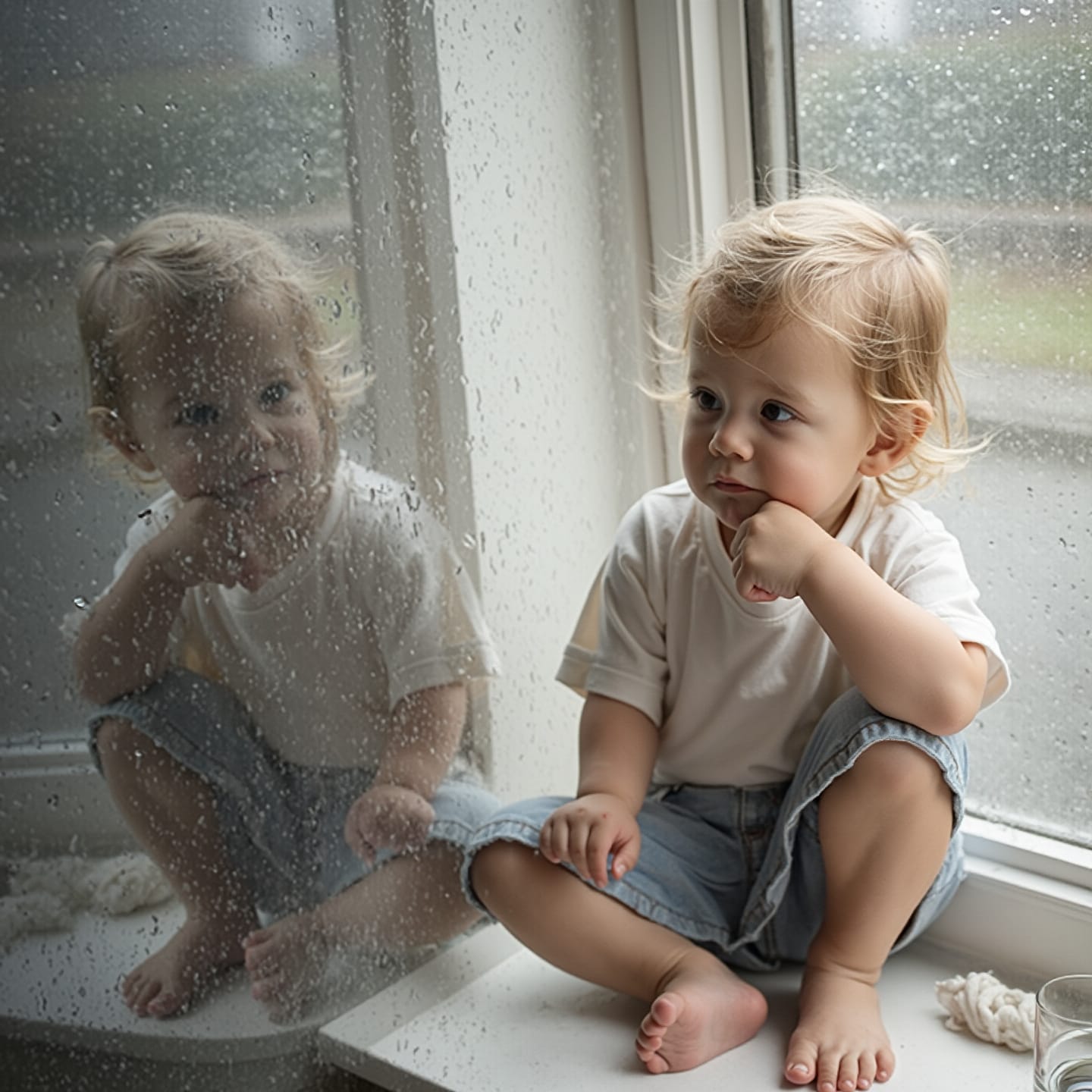
Child anxiety: How you respond matters more than you think!
Anxiety is the body’s natural alarm system that signals some kind of threat in the environment. It's an important emo…
Read more
By: Dr. Zia

As a parent of an anxious child, I’ve seen firsthand how our natural instinct to protect and comfort can sometimes work against us. When my young client Sophia would tearfully ask, “But what if something bad happens at school?” I watched her mother respond with immediate reassurance: “Nothing bad will happen, sweetie. I promise.” The momentary relief on Sophia’s face was quickly replaced by another worry, another question, and another need for reassurance. This cycle continued, growing stronger each day, until both mother and daughter felt trapped in an exhausting pattern.

The reassurance trap is a subtle but powerful cycle that many parents of anxious children fall into without realizing it. Your child expresses a worry, you provide comfort and reassurance, they feel temporarily better, but soon the anxiety returns—often stronger than before. This leads to more requests for reassurance, creating a self-perpetuating cycle that can be difficult to break.
What makes this pattern so challenging is that it feels like the right thing to do. Children are hard wired to seek comfort from their caregivers, and parents are also hard wired to provide protection to their children. Sp, when our children are distressed, our parental instincts push us to comfort them and ease their suffering. However, constant reassurance can unintentionally reinforce the idea that their anxious thoughts are valid threats that require special attention and protection. After all, is there is really nothing to worry about, why are we talking about this so much?
Reassurance becomes problematic when it transforms from occasional comfort to a necessary coping mechanism for your child. While it provides immediate relief, it actually prevents children from developing their own ability to tolerate uncertainty and manage discomfort—skills that are essential for emotional resilience.
Research from the Child Mind Institute shows that children who receive excessive reassurance can become dependent on external validation to manage their emotions. This dependency can limit their confidence in their own judgment and ability to cope with challenges independently.
Recognizing that you’re stuck in this pattern is the first step toward positive change. Here are some clear indicators that reassurance-seeking has become problematic in your family:
If several of these signs sound familiar, you’re likely caught in the reassurance trap. The good news is that with understanding and consistent effort, you can help your child develop healthier coping strategies while still providing the emotional support they need.
One of the most challenging aspects of parenting an anxious child is finding the balance between being supportive and accidentally enabling anxiety. This distinction is crucial for helping children build resilience and confidence in managing their emotions.
True support acknowledges your child’s feelings while encouraging them to develop their own coping skills. When you support an anxious child, you:
Accommodation, on the other hand, involves changing family routines or your own behaviour to help your child avoid anxiety. When you accommodate anxiety, you might:
In my work with families at our practice, I’ve observed that parents often don’t realize how subtle accommodation can be. Small accommodations can gradually expand until family life revolves around managing the child’s anxiety rather than helping them learn to manage it themselves.
According to research published by the Anxiety and Depression Association of America, accommodation can actually strengthen anxiety over time, while supportive approaches that gradually expose children to challenging situations help reduce anxiety symptoms.
The key to breaking the reassurance cycle is learning how to validate your child’s emotional experience without reinforcing their anxious beliefs. This approach acknowledges their distress while helping them develop more realistic thinking patterns.
When your child expresses worry or fear, try these approaches:
At Foundations for Emotional Wellness, we teach parents that validation doesn’t mean agreeing with anxious thoughts—it means acknowledging that the emotion itself is real and understandable.

Instead of traditional reassurance (“Don’t worry, everything will be fine”), try these alternatives:
These responses validate feelings while shifting the focus to coping and resilience rather than eliminating uncertainty or guaranteeing safety.
Breaking the reassurance cycle requires a gradual, consistent approach. This step-by-step guide can help you transition from providing constant reassurance to fostering healthy emotional regulation in your child.
Before making changes, set the foundation for success:
The parent-child relationship is the foundation for all anxiety management, so ensure your child feels secure in your support before making changes.
Now, begin the process of gradually changing your response pattern:
As your child adjusts to reduced reassurance, help them develop their independence:
In our clinical practice, we’ve seen that consistency is crucial during this process. Children initially may increase their reassurance-seeking when they sense a change in your response pattern, but with persistence, most adapt to the new approach within a few weeks.
Perhaps the most overlooked aspect of breaking the reassurance cycle is addressing our own anxieties as parents. Setting boundaries around reassurance can be emotionally challenging, especially when it means temporarily allowing your child to experience discomfort.
Parents often provide excessive reassurance because:
Acknowledging these concerns is important. Many parents I work with express guilt about having inadvertently contributed to the reassurance cycle, but I always emphasize that this pattern develops from a place of love and concern—not poor parenting.
To effectively support your child through this transition, try these approaches:
The parent’s emotional regulation directly influences the child’s ability to regulate their emotions. When you remain calm in the face of your child’s distress, you model the very skills you’re trying to teach them.

Breaking the reassurance trap is just one component of raising emotionally resilient children. The ultimate goal is to help your child develop a healthy relationship with uncertainty and discomfort—a skill that will serve them throughout life.
As your child becomes less dependent on reassurance, continue building their emotional skills by:
Research consistently shows that children who learn to navigate anxiety rather than avoid it develop greater confidence and adaptability. According to a Georgetown University study, teaching children to tolerate uncertainty is one of the most effective ways to prevent anxiety disorders from persisting into adulthood.
While many families can successfully implement these strategies independently, some situations benefit from professional guidance:
Professional support doesn’t mean you’ve failed as a parent—rather, it means you’re committed to providing your child with all available resources for emotional health.
Breaking the reassurance trap represents a fundamental shift in how we support anxious children. Rather than trying to eliminate anxiety (an impossible task), we focus on building the skills to manage anxiety effectively. This approach acknowledges that some anxiety is a normal part of the human experience—one that can actually drive growth when approached with the right tools.
As parents, we can find a middle path between the extremes of constant reassurance and leaving children to face fears without support. This balanced approach involves staying emotionally connected while gradually encouraging independence.
I’ve witnessed remarkable transformations in families who commit to this process. Children who once sought constant reassurance develop confidence in their ability to handle uncertainty. Parents who felt trapped by reassurance requests find new ways to support their children while promoting growth. And the entire family system becomes more resilient and adaptable in the face of life’s inevitable uncertainties.
Remember that change takes time, consistency, and patience—both with your child and yourself. The journey of breaking the reassurance trap is as much about your growth as a parent as it is about your child’s emotional development. By taking this journey together, you’re not only addressing current anxiety but also building a foundation of emotional resilience that will serve your child throughout their life.